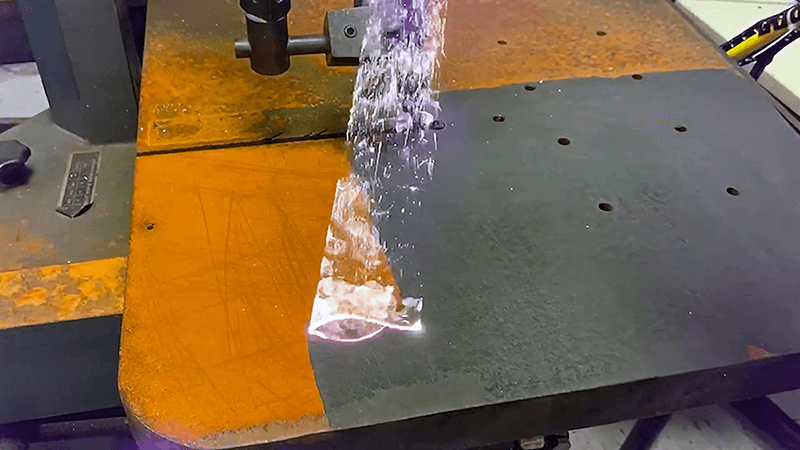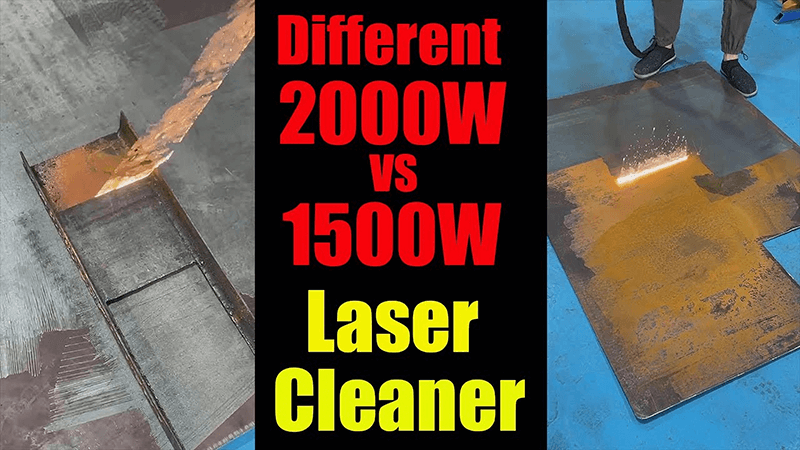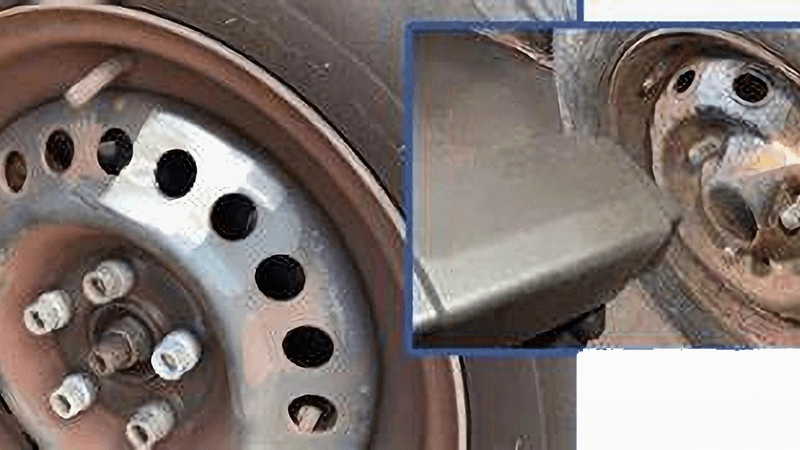Many buyers feel stuck between expensive blasting setups and cheap imports that fail too soon. They want mobility, consistency, and low cost of ownership. Old methods waste time and money. A new solution exists with portable laser cleaning.
Yes, there are true alternatives to the LaserBlast™ Portable Laser Cleaning System. The Kirin Laser KR-series offers compact, flexible, and reliable cleaning performance that rivals larger rigs while solving cost, maintenance, and mobility challenges.
Laser cleaning is still new for many industries. Let me explain how it works, why it matters, and why I trust Kirin Laser machines to deliver results for partners worldwide.

Can Other Laser Cleaning Machines Really Replace the LaserBlast™ Portable System?
When people first hear about laser cleaning, they worry that cheaper or alternative machines cannot match premium systems. They imagine lower power, poor reliability, or hidden costs. That fear makes many hesitate. But alternatives exist.
Other laser cleaning machines can replace the LaserBlast™ system if they combine portability, consistent power, and low maintenance. Kirin Laser KR-series machines achieve this by using advanced fiber laser sources, ergonomic designs, and simple software controls for industrial use.
Field tests matter
I tested several portable systems, but many failed on rusted steel. Either the cleaning was uneven or the units overheated. The KR-series delivered steady beams, ran cool, and worked longer without pauses.
Customer story
One client relied on abrasive blasting. Dust covered his shop, filters clogged, and consumables cost him thousands each month. When I showed him our portable laser cleaner1, he was amazed. No mess, precise rust removal2, and no repeat costs. Downtime fell, and his team enjoyed using the new machine.
Comparison table
| Feature | LaserBlast™ Portable | Kirin KR-series Portable |
|---|---|---|
| Portability | Compact | Compact, lighter options |
| Cleaning power | High | High with adjustable modes |
| Maintenance | Moderate | Near zero, no consumables |
| Cost efficiency | Good | Better long-term savings |
| After-sales support | Limited | Global OEM customization |
Alternatives must be real, tested, and supported. That is why Kirin Laser offers portable solutions that truly rival premium systems.

Does laser cleaning really work?
People often doubt new technology. They think laser beams are too weak for industrial dirt, rust, or paint. They imagine gimmicks, not real tools. These doubts are natural, but wrong.
Laser cleaning works by focusing a high-energy beam that removes contaminants, rust, paint, or grease without damaging the base material. It is effective across metals, plastics, and composites, making it a clean, precise, and chemical-free solution.
How it works
The laser beam creates microbursts of heat and plasma. These blasts lift coatings and oxides while leaving the underlying material intact. It is fast, contactless, and requires no chemicals.
My experience of using Kirin laser cleaning machine
I once thought only sandblasting could remove heavy corrosion. But during a test on thick rusted steel, the KR-series3 cleared layers in seconds, leaving a shiny surface ready for welding. No dust cloud, no secondary waste, just clean metal.
Structured explanation
| Contaminant | Result of Laser Cleaning4 |
|---|---|
| Rust | Removed without grinding or abrasion |
| Paint | Stripped without damaging base metal |
| Oil/Grease | Vaporized and cleaned instantly |
| Oxides | Cleared, leaving surface ready for bonding/welding |
| Residual coatings | Removed uniformly, unlike manual scraping |
Laser cleaning really works. It is not a futuristic idea—it is a practical tool that industries use every day.

How to use a laser cleaning machine?
Many think using laser machines requires high skills or training. They worry about complex software or dangerous beams. The truth is different. Portable laser cleaning is simple.
To use a laser cleaning machine, operators adjust the beam parameters, aim the handheld gun at the surface, and move it evenly across the target area. With safety glasses and simple settings, even new operators can achieve consistent, precise results.
Setup simplicity
Our KR-series machines plug into standard power. Software presets let operators choose rust removal5, paint stripping, or oil cleaning with one button. No special consumables or adjustments are needed.
Operator comfort
I trained a new technician who never used a laser before. Within 30 minutes, he was confidently cleaning steel parts. The handheld gun6 was light, and the digital display guided him.
Usage steps
| Step | Action |
|---|---|
| Setup | Connect power, attach handheld gun, wear safety glasses |
| Choose mode | Select cleaning preset on digital panel |
| Aim and clean | Sweep beam across surface at steady pace |
| Adjust settings | Change beam width or power for thicker coatings |
| Finish | No cleanup required, just a clean surface |
Using a laser cleaner is simple, safe, and user-friendly. It removes the barriers that stop businesses from upgrading.

What can laser cleaning remove?
People ask if lasers only work on rust. They doubt it can handle paint, grease, or mixed surfaces. They fear buying a machine that does only one job. The truth is broader.
Laser cleaning can remove rust, paint, grease, oxides, coatings, and even production residues from metals, plastics, and composites. It is versatile enough to replace sandblasting, chemical cleaning, and manual scraping in many industries.
Range of materials
During my tests, I used laser cleaning7 on rusty pipes, aluminum panels with paint, greasy machine tools, and mold surfaces. Each time, the result was consistent. The base material remained intact, and the surface was ready for use.
Industrial use cases
I worked with a car parts supplier who needed paint removed before re-coating. Traditional methods damaged parts or left residues. With the KR-series, he achieved clean surfaces without downtime. His re-coating quality improved and scrap rate dropped.
Application overview
| Contaminant | Material examples | Laser cleaning result |
|---|---|---|
| Rust | Steel, iron | Clean bare metal surface |
| Paint/Coatings | Aluminum, steel, composites | Uniform removal, no abrasion |
| Oil/Grease | Machinery parts, molds | Vaporized, no residue |
| Oxides | Weld joints, aerospace parts | Shiny, bond-ready surfaces |
| Residual adhesives | Plastic or metal components | Precise removal, no chemicals |
Laser cleaning removes much more than rust. It is a versatile industrial tool8 that supports many applications.

Conclusion
Alternatives to the LaserBlast™ system do exist. I have tested many, and the Kirin Laser KR-series9 proves itself every day. It matches performance, adds portability, and removes hidden costs. Laser cleaning works on rust, paint, grease, and oxides, with simple operation and wide versatility. For businesses seeking clean, precise, and low-maintenance solutions, portable laser cleaning machines like ours are the future of surface preparation and industrial cleaning.
-
Explore this link to understand how portable laser cleaners can enhance efficiency and reduce costs in various applications. ↩
-
Discover effective rust removal techniques and products that can save time and improve results in your projects. ↩
-
Learn more about the KR-series to see how it effectively removes contaminants without damaging the underlying material. ↩
-
Explore this link to understand how Laser Cleaning can revolutionize surface preparation and maintenance in various industries. ↩
-
Explore this link to discover advanced techniques and benefits of laser rust removal, enhancing your cleaning processes. ↩
-
Discover how a handheld laser cleaning gun enhances efficiency and ease of use in industrial cleaning tasks. ↩
-
Explore the advantages of laser cleaning, including efficiency and surface integrity, to enhance your industrial processes. ↩
-
Discover top industrial tools that can improve your cleaning processes and boost productivity in various applications. ↩
-
Find the best laser cleaning machine and laser cleaning solutions from Kirin Laser, clicking this link to get all your needs for your applications. ↩





